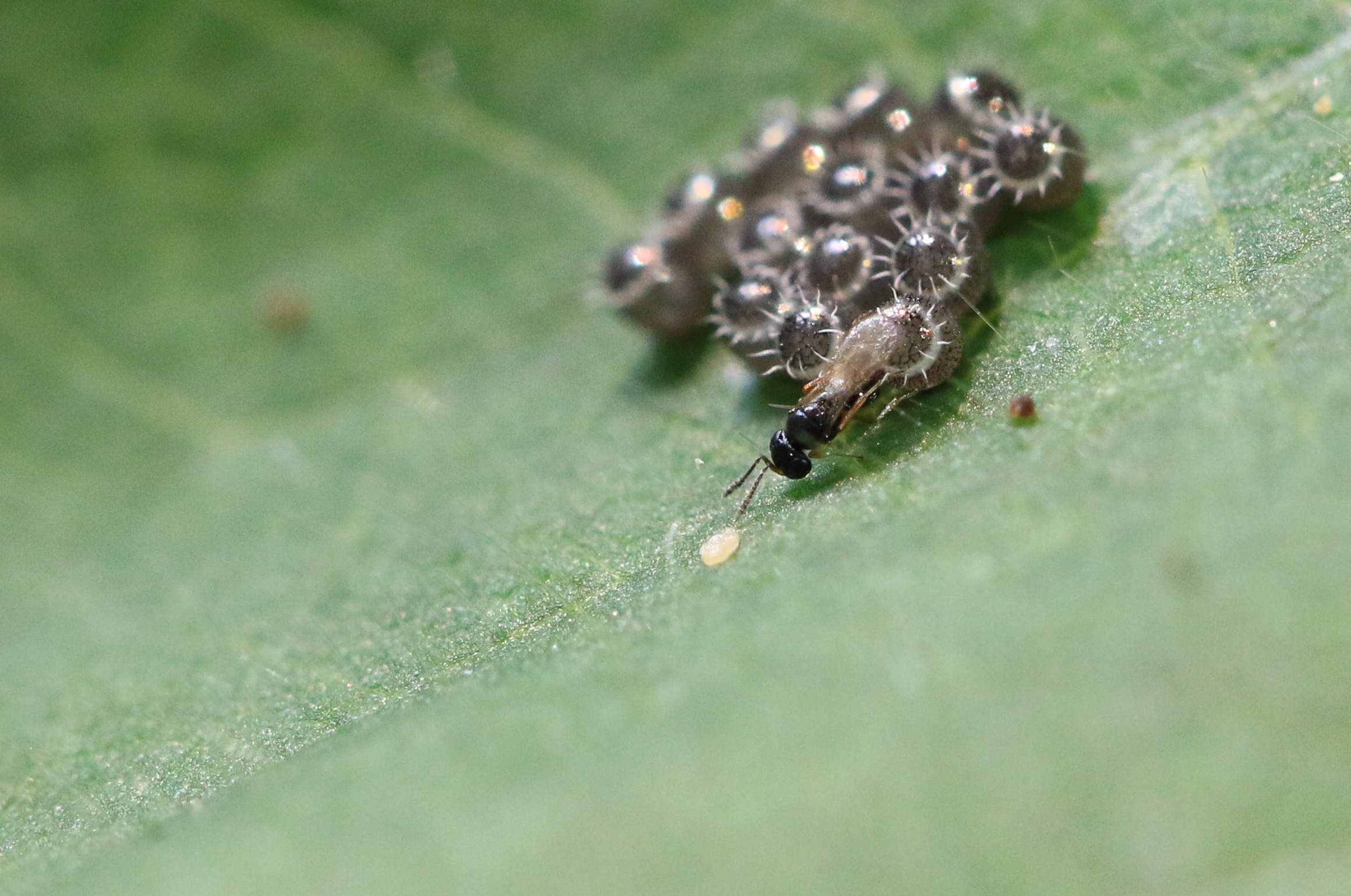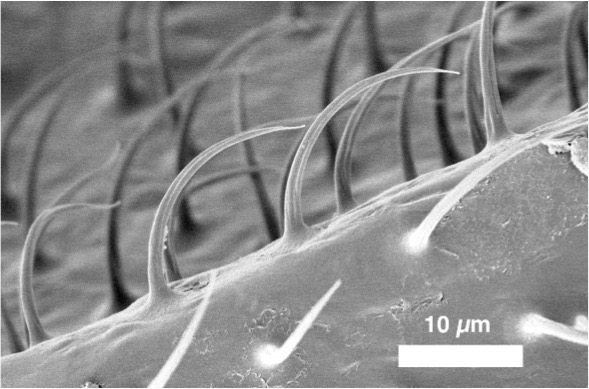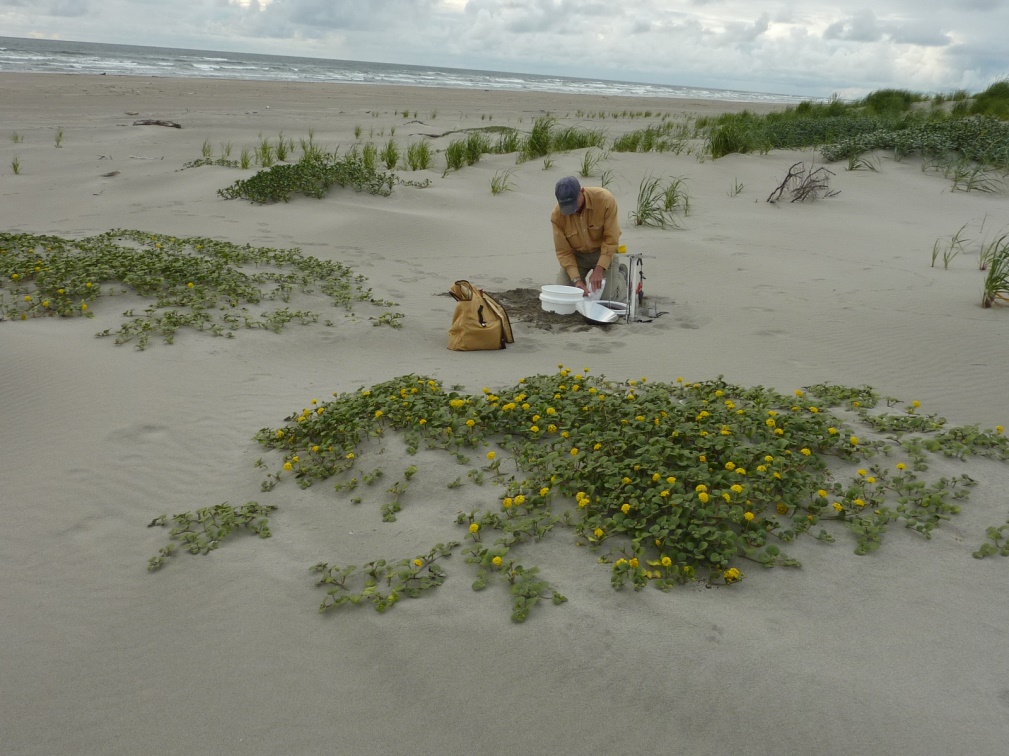(English version here)
Cet article fait partie d’une série continue de rassemblement de la recherche entomologique canadienne (Canadian Entomology Research Roundups). Voici ce que les étudiants de cycle supérieur canadiens ont fait récemment:
De la part des auteurs:
Finn Hamilton (University of Victoria)
C’est bien connu que la majorité des insectes sont hôtes à des bactéries symbiotiques qui ont de profondes conséquences sur la biologie de l’hôte. Dans certains cas, ces symbioses peuvent protéger l’hôte contre de virulents parasites et pathogens, même si dans la plupart des cas planent encore un mystère sur la façon dont les symbionts réussissent à atteindre cette défense. Dans cet article, nous avons démontré qu’une souche de la bactérie Spiroplasma qui protège son hôte drosophile contre un nématode parasitaire virulent encode une toxine sous forme de protéine. Cette toxine semble attaquer l’hôte du nématode durant une défense induite par Spiroplasma. Ceci représente, à ce jour, une des démonstrations les plus claires des mécanismes sous-jacents de la symbiose promouvant la défense des insectes. Lien vers l’article

Voici une mouche Drosophila falleni infecté par le nematode, Howardula aoronymphium, dont Spiroplasma la protège. Crédit phot: Finn Hamilton.
Lucas Roscoe (University of Toronto)
L’agrile du frêne (Agrilus planipennis Fairmaire) est un buprestide ravageur s’attaquant aux frênes d’Amérique du Nord. Dans l’optique du développement de plans de gestion à long-terme de l’agrile du frêne, plusieurs projets détaillant la biologie et l’écologie de parasitoïdes indigènes peu étudiés auparavant ont été amorcés. Un des projets s’intéresse à la séquence de reproduction d’un parasitoïde, Phasgonophora sulcata Westwood. Plusieurs insectes entreprennent des actions répétées avant la reproduction qui sont souvent induites par des phéromones. Les résultats de cette étude sont la description de la séquence de reproduction de P. sulcata et la preuve que les phéromones produites par les femelles sont à la base de ses actions. Liens vers l’article

Phasgonophora sulcata, un parasitoïde important de l’agrile du frêne. Crédit photo: Lucas Roscoe.
Marla Schwarzfeld (University of Alberta)
Les guêpes parasitiques du genre Ophion (Hymenoptera: Ichneumonidae) sont presqu’entièrement inconnu dans la région Néarctique, où la majorité des espèces ne sont pas décrites. Dans cette étude, nous publions la première phylogénie moléculaire de ce genre, basé sur les régions COI, ITS2, and 28S. Bien que nous mettions l’accent sur les spécimens Néarctique, nous avons aussi inclus des représentants des espèces les plus connus de de l’ouest de la région Paléarctique et plusieurs séquences d’autre régions géographiques. Nous avons délimités 13 groupes d’espèces, la plupart étant reconnu pour la première fois dans cette étude. Cette phylogénie nous fournit un cadre essentiel qui pourra, nous espérons, inspirer les taxonomistes à divisier et conquérir (et décrire!) de nouvelles espèces dans ce genre qui présente de grands défis morphologiques. Liens vers l’article

A parasitoid wasp in the genus Ophion. Photo credit: Andrea Jackson
Seung-Il Lee (University of Alberta)
Seung-Il Lee et ses collègues (University of Alberta) ont trouvé que de larges territoires de rétention (> 3.33 ha) minimisent « l’effet de bordure » négatif sur les coléoptères saproxyliques dans les peuplements boréals d’épinette blanche. Liens vers l’article Billet de blogue (EN)

Un coléoptère saproxylique, Peltis fraterna. Crédit photo: Seung-Il Lee.
Paul Abram (Université de Montréal)
La relation entre la taille des insectes et certains traits distinctifs (tel que la longévité, la fécondité, …) a été largement étudié, mais l’effet additionnel de la taille sur les traits comportementales sont moins bien connus. En utilisant le parasitoïde d’oeuf Telenomus podisi Ashmead (Hymenoptera: Platygastridae) et trois de ses hôtes punaises comme système modèle, nous avons démontrés que la différence de taille était associé a un changement dans la plusieurs traits distinctifs (longévité, masse d’oeufs, taille des oeufs), mais aussi de certains traits comportementales (vitesse de marche, taux d’oviposition, taux de marquage des oeufs). Nos résultats mettent en relief comment la phénotype complet (comportement et traits distinctifs) doivent être considéré quand nous évaluons l’association entre la taille et la condition physique. Liens vers l’article

Le parasitoïde Telenomus podisi parasitisant les oeufs de la punaise Podisus maculiventris. Crédit photo: Leslie Abram.
Delyle Polet (University of Alberta)
Les ailes de insectes ont souvent des éléments directionnels rugueux – comme des poils et des écailles- qui perdent des gouttes d’eau dans le sens des éléments, mais pourquoi ces éléments ne pointent pas toujours dans la même direction? Nous avons proposé que trois stratégies sont en jeu. Les gouttes pourrait être (1) évacuer loin du corps, (2) être perdues aussi vite que possible et (3) évacuer de « vallées » formés entre les veines des ailes. Un modèle mathématique combinant trois de ces stratégies concorde avec l’orientation des poils sur un taon (Penthetria heteroptera) assez bien et pourrait être appliqué à d’autres espèces ou à des matériaux inspirés par la biologie. Liens vers l’article

Poils sur l’aile d’un taon (Penthetria heteroptera). Crédit photo: Delyle Polet.
Résumés bref de recherche
Taxonomie, Systématique, and Morphologie
Thomas Onuferko du laboratoire Packer à York University et ses collègues ont réalisé un vaste étude sur les espèces d’abeilles dans la région de Niagara, Ontario. Onuferko et al. ont collecté plus de 50 000 abeilles et ont découvert 30 espèces qui n’avait pas été rapporté dans la région. Liens vers l’article
Christine Barrie et ses collègues ont signalé que des mouches de la famille Chloropidae sont associés aux phragmites au Canada. Lien vers l’article
Comportment et écologie
Blake Anderson (McMaster University) et ses collègues ont étudié l’hypothèse du découplage du comportement social et de l’activité dans les mouches larvaires et adultes. Lien vers l’article
Susan Anthony du laboratoire Sinclair à Western University, ainsi que Chris Buddle (McGill University), ont déterminé que le pseudoscorpion de Béringie peut tolérer tant les basses températures et l’immersion. Lien vers l’article
Une étude par Fanny Maure (Université de Montréal) démontre que le status nutritionnel d’un hôte, la coccinelle maculée (Coleomegilla maculata), influence le destin de l’hôte et condition physique du parasitoïde. Lien vers l’article
Est-ce que la connectivité est la clé? Des laboratoires Buddles et Bennet à l’Université McGill et du laboratoire James à l’Université de Montréal, Dorothy Maguire (Université McGill) et ses collègues ont utilisé la connectivité du paysage et les insectes herbivores pour proposer un cadre pour examiner les compromis associés aux services ecosystèmiques. Lien vers l’article
Alvaro Fuentealba (Université Laval) et ses collègues ont découvert que différentes espèces d’arbres hôtes montrent des variations à la résistance naturelle à la tordeuse du bourgeon de l’épinette. Lien vers l’article
Gestion des insectes ravageurs
Rachel Rix (Dalhousie University) et al. ont observé qu’un stress modéré induit par l’insecticide pour augmenter la reproduction et aider les pucerons a mieux se débrouiller avec le stress subséquent. Lien vers l’article
Lindsey Goudis (University of Guelph) et ses collègues ont découvert que la meilleure façon de contrôler Striacosta albicota (Smith) est d’appliquer de la lamba-cyhalothrine de la chlorantraniprole 4 à 18 jours après l’éclosion de 50% des oeufs. Lien vers l’article
Matthew Nunn (Acadia University) et ses collègues ont documenté la diversité et densité d’importantes espèces ravageuses des bleuets sauvages en Nouvelle-Écosse. Lien vers l’article
Physiologie et génétique
Est-ce que l’heterozygositie améliore la symétrie de Xeromelissa rozeni? Margarita Miklasevskaja (York University) et ses collègues ont testé cette hypothèse dans leur plus récent article. Lien vers l’article

Un male Xeromelissa rozeni. Crédit photo: Margarita Miklasevskaja.
Jasmine Janes, récemment graduée de University of Alberta, et d’autres ont exploré les systèmes de reproduction et de structure génétique à petite échelle pour la gestion efficace du Dendroctone du pin ponderosa. Lien vers l’article
Du laboratoire Sperling à University of Alberta, Julian Dupuis et Felix Sperling ont examiné l’interaction complexe de l’hybridation et de la spéciation. Ils ont caractérisé le potentiel d’hybridation dans un groupe de Papilonidae. Lien vers l’article
Marina Defferrari (University of Toronto) et ses collègues ont identifié un nouveau peptide similair à l’insuline dans Rhodnius prolixus. Ses peptides sont impliqués dans l’homéostasie métaboliques des lipides et carbohydrates. Lien vers l’article
Techniques
Crystal Ernst (McGill University) et ses collègues ont collecté des coléoptères et des araignées dans différents habitats du Nord. Ils ont trouvé que la diversité des coléoptères et des araignées par habitat et type de trappes. Lien vers l’article
Nous continuous à aider à divulguer les publications des étudiants de cycle supérieur à la plus vaste communauté entomologique grâce aux rassemblement de recherche. Si vous avez publié un article récemment et souhaitez le divulguer, envoyez-nous un email à entsoccan.students@gmail.com. Vous pouvez aussi nous envoyer des photos et une courte description de votre recherche dans le but apparaître dans notre prochain rassemblement de recherche.
Pour des mises à jour régulières sur la nouvelle recherche entomologique canadienne, vous pouvez joindre la page Facebook de ESC Students ou nous suivre sur Twitter @esc_students (EN) ou @esc_students_fr (FR).
















